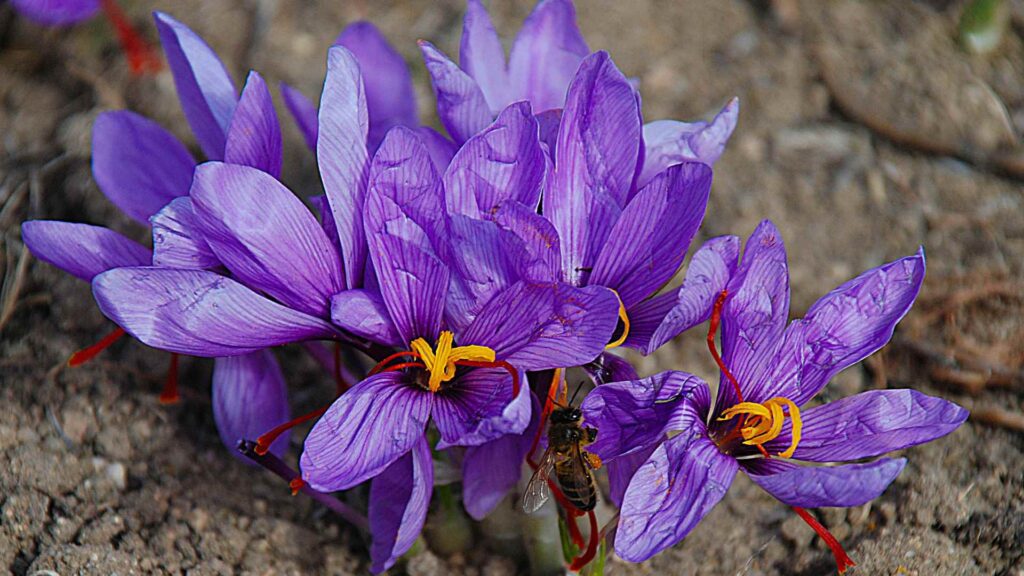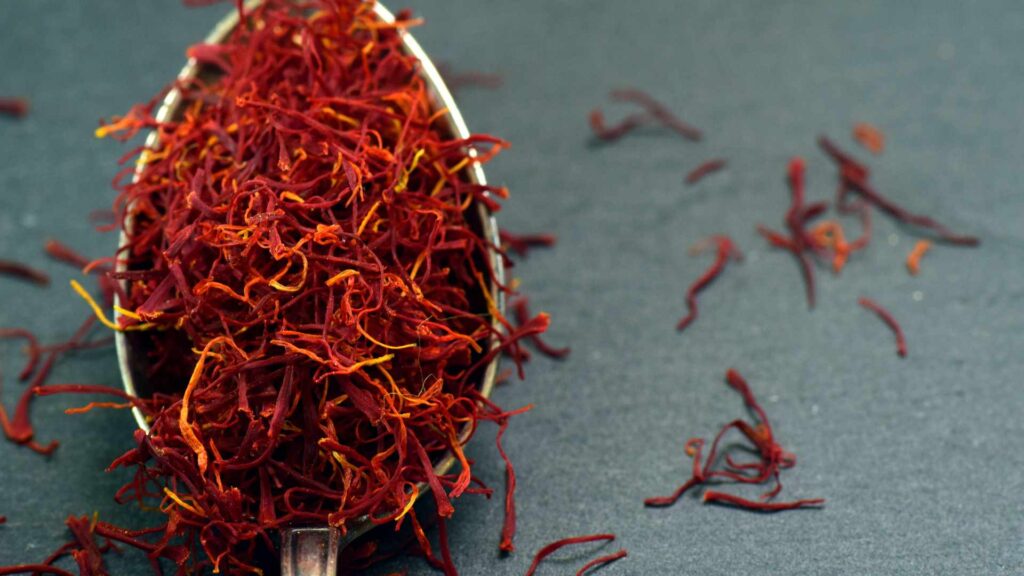
The Evolution of Spanish Cuisine – A Journey Through Flavors and History
A Culinary Mosaic Forged Through Centuries Spanish cuisine is a living archive of the civilizations that shaped the Iberian Peninsula. Its evolution spans millennia, beginning
The gastronomic tours Seville offer a gateway to the flavors that have defined the city’s culinary history. Seville has been a key point in the spice trade routes connecting the Middle East, North Africa, and the Americas. Among all the spices that have left their mark on Andalusian cuisine, saffron stands out as a symbol of luxury and tradition. However, it is not the only one: cinnamon, cumin, paprika, and nutmeg have played a fundamental role in shaping the most iconic flavors of the region. These spices, introduced over centuries, continue to define the essence of Sevillian dishes and are a key highlight in the gastronomic tours Seville by Local Food Experience.

Saffron, known as “red gold,” arrived in Spain with the Moors, who ruled the Iberian Peninsula for over seven centuries. Originally cultivated in Persia, saffron quickly became a prized ingredient in Spanish cuisine, particularly in Andalusia. Its labor-intensive harvesting process—where each flower yields only a few delicate threads—makes saffron one of the most valuable spices in the world.
In Sevillian cuisine, saffron is an essential component in paellas, stews, and broths, providing not only a deep golden hue but also a subtle earthy and floral aroma. It is particularly prominent in dishes such as caldereta de cordero (lamb stew) and puchero andaluz (traditional chickpea-based stew), where its balance of flavors enriches each recipe.
During the Moorish period, Andalusia became a melting pot of culinary traditions. Spices such as cinnamon, cumin, anise, and cloves were widely used, blending sweet and savory flavors in an innovative way. One of the most iconic examples of this fusion is espinacas con garbanzos (spinach with chickpeas), a dish where cumin and garlic mix with the earthy richness of legumes.
Cinnamon, often associated with desserts today, was historically used in both sweet and savory dishes. An example of this influence is pollo a la moruna (Moorish-style chicken), which combines cinnamon, honey, and saffron into a unique flavor profile that remains popular in Sevillian kitchens.

The discovery of the Americas in the 15th century introduced Spain to a new range of flavors. Among them, paprika (pimentón de la Vera) became one of the most transformative additions to Spanish cuisine. Originally from Mexico and Peru, peppers were brought to Spain and quickly adopted, leading to the development of different varieties of paprika, ranging from sweet to smoky and spicy.
Paprika became a fundamental ingredient in Sevillian cooking, adding depth and color to dishes such as sopa de ajo (garlic soup) and solomillo al whisky (pork tenderloin in whisky sauce). The region of La Vera, in Extremadura, perfected the smoking process for paprika, creating an essential seasoning in Andalusian kitchens.
Another significant spice from the New World was allspice, which, although less common than paprika, found its way into Sevillian stews and meat marinades, adding complexity to local flavors.
Exploring Sevillian gastronomy means diving into a world of spices that tell the story of centuries of trade, conquest, and cultural exchange. In the gastronomic tours Seville organized by Local Food Experience, visitors not only taste these ingredients but also learn about their origins, significance, and the historical routes that brought them to Andalusia.
From the vibrant golden hues of saffron-infused broths to the deep smokiness of paprika-seasoned dishes, spices are at the heart of Sevillian cooking. These ingredients are not just seasonings; they are a legacy passed down through generations, enriching each dish with history and tradition.
If you visit Seville, you cannot miss the opportunity to embark on a flavorful journey where the past and present blend seamlessly. Discover the magic of saffron, cumin, paprika, and other essential spices in the best gastronomic tours Seville with Local Food Experience, and savor the authentic culinary heritage of Andalusia.

A Culinary Mosaic Forged Through Centuries Spanish cuisine is a living archive of the civilizations that shaped the Iberian Peninsula. Its evolution spans millennia, beginning

A Timeless Beverage with Ancient Roots Sangria is far more than a colorful summer refreshment—it is a cultural symbol deeply embedded in the fabric of

Explore the Heart of Andalusian Wine Culture Experience the essence of Andalusia with our full-day Sherry Wine Tasting Tour from Seville. This unforgettable journey takes

Imagine strolling through the colorful streets of Triana, one of Seville’s most authentic neighborhoods, guided by a local expert who can turn a slice of

Discovering the Beauty of Authentic Sevillian Dishes In Seville, true culinary treasures often come disguised behind rustic, imperfect appearances. The Ugly Food Tour celebrates these

Understanding Tapas Culture in Seville In Seville, tapas are much more than just food—they are a lifestyle. Going out for tapas means moving from bar
Click here to download the pdf
Explore Local Food Experiences in your city

As it seems you come from alcazarsevillatours.com, you get 20% off with the code alc20 on your next booking in localfoodexperiences.com